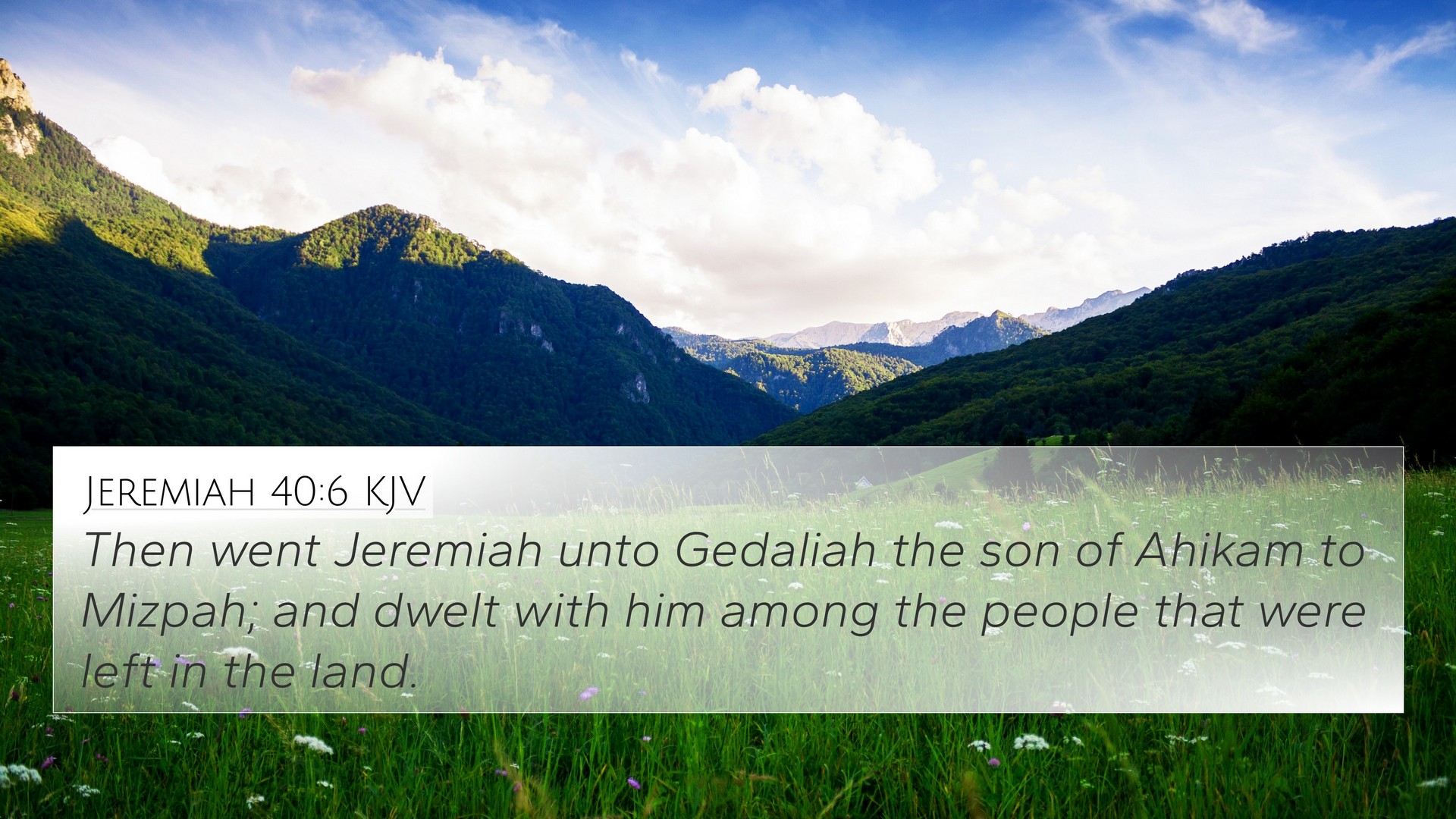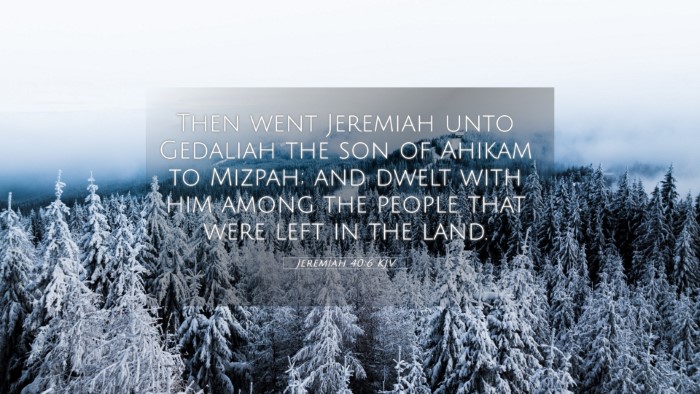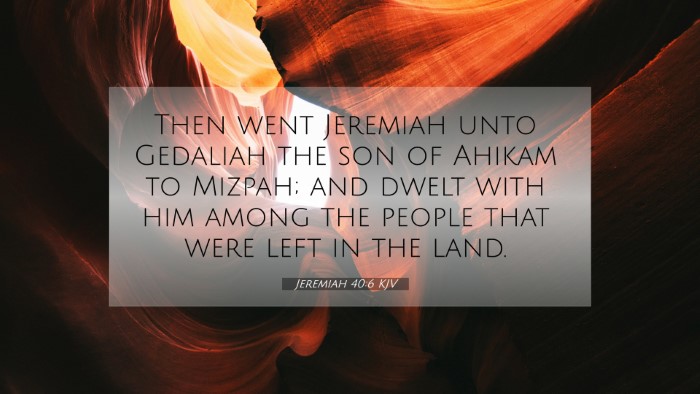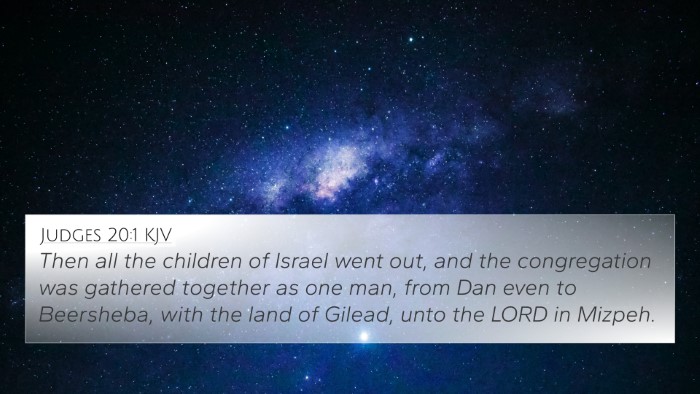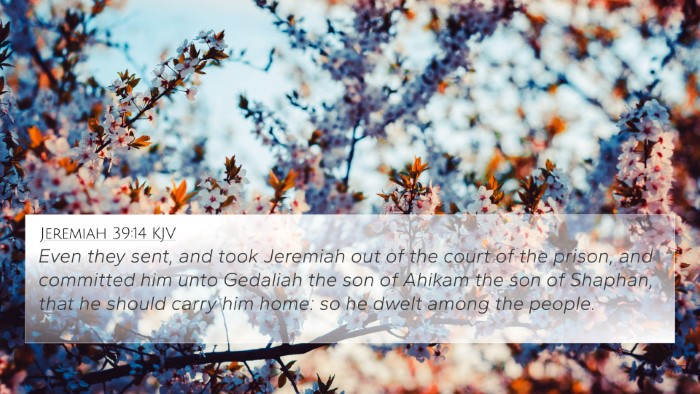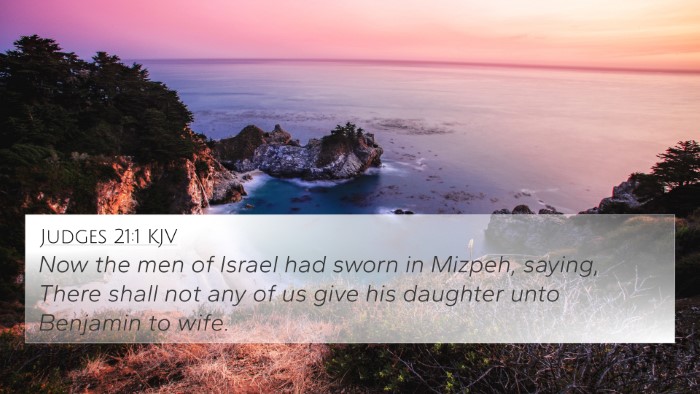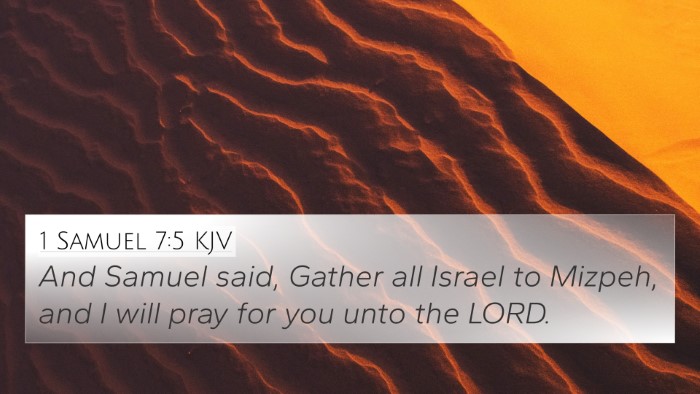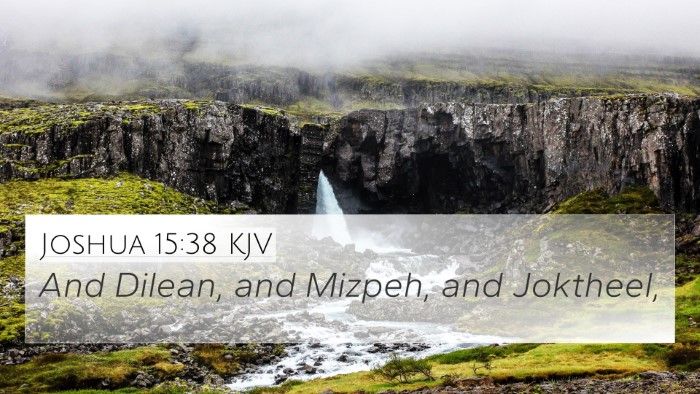Understanding Jeremiah 40:6
Verse: "And Jeremiah went to Gedaliah the son of Ahikam to Mizpah; and dwelt with him among the people that were left in the land." (Jeremiah 40:6)
Summary of Meaning
This verse depicts the moment when Jeremiah joins Gedaliah, the appointed governor of the remnant of Judah after the Babylonian conquest. His presence signifies God's continued guidance amidst the devastation and chaos following the exile. Jeremiah’s return to Judea and his association with Gedaliah symbolize hope and restoration for the Jewish people. It emphasizes the importance of community and leadership in times of despair.
Insights from Public Domain Commentaries
Matthew Henry's Commentary
Henry highlights that Jeremiah's decision to go to Gedaliah demonstrates his faithfulness to God's directive. He underscores that by aligning with Gedaliah, who represents divine favor, Jeremiah sought to support the restoration of Judah and the return to normalcy for the people. Henry emphasizes the encouragement Gedaliah's governance would provide to the remnants of the people.
Albert Barnes' Notes
Barnes interprets Jeremiah’s actions as vital for the reconstruction of the Jewish community in Judah. He discusses how Jeremiah's presence with Gedaliah symbolizes God’s ongoing providence and assurance to the people. By stating that Jeremiah "dwelt" with them, he conveys a sense of belonging and fellowship among the people, which is essential during such turbulent times.
Adam Clarke's Commentary
Clarke focuses on the significance of Gedaliah’s appointment and the restoration phase. He notes that Jeremiah’s cooperation indicates a hopeful future, promoting peace and stability among the surviving population. Clarke also discusses the broader context of prophecies and their fulfillments, drawing attention to the divine plan unfolding through human leaders like Gedaliah.
Bible Verse Cross-References
This verse is linked to several other scripture passages that enrich its meaning:
- Jeremiah 39:14 – Chronicles the transfer of Jeremiah into Gedaliah's custody.
- Jeremiah 41:10 – Discusses the threats to Gedaliah's leadership by those who opposed him.
- 2 Kings 25:22 – Provides insights into Gedaliah's appointment as governor of the remnant.
- Isaiah 44:28 – Mentions Cyrus as a shepherd, linking it to God's use of leadership for restoration.
- Ezekiel 37:21-22 – Promises restoration of Israel's unity under new leadership.
- Zechariah 8:8 – Emphasizes God's intention to restore His people back to Jerusalem.
- Romans 15:4 – Connects the past scriptures to present hope and endurance for believers.
Connections Between Bible Verses
The verse from Jeremiah 40:6 offers thematic connections to various aspects of redemption, leadership, and community:
- Covenant Promises: Reflected in Jeremiah 29:10-14, where God promises to gather His people after their exile.
- Hope and Restoration: Echoed in Lamentations 3:22-23, signifying God’s unwavering faithfulness to His people.
- Leadership during Crisis: Seen in 1 Peter 5:2-3, which highlights the role of leaders to shepherd their flock with care.
Cross-Referencing Bible Study Tools
To study Jeremiah 40:6 and its connections further, various tools and methods can be applied:
- Bible Concordance: Helps locate similar themes and verses easily.
- Bible Cross-Reference Guide: Provides structured connections among verses.
- Cross-Referencing Bible Study Methods: Engages deeper understanding through comparative analysis.
Conclusion
Jeremiah 40:6 holds significant weight in understanding the restoration themes within the Bible. By examining this verse alongside its cross-references, one can grasp the narrative of hope, divine guidance, and communal resilience after a period of calamity. Utilizing various cross-referencing tools enhances the exploration of these intertwined themes, bringing to light the connections between various Biblical texts.
